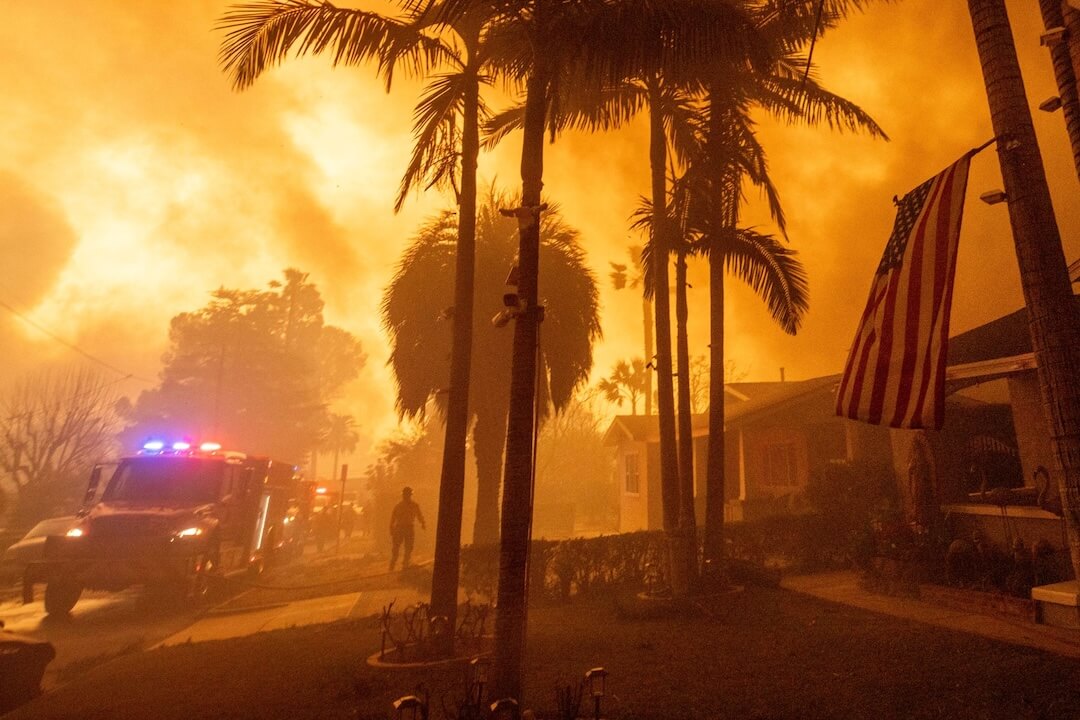
The Morning Meeting with Al Tompkins is a daily Poynter briefing of story ideas worth considering and other timely context for journalists, written by senior faculty Al Tompkins.
The Consumer Price Index today will be the numbers that Democrats carry into the midterm elections. They will determine how much of a raise Social Security recipients realize in January. They will be a barometer that Federal Reserve governors will watch to see if inflation is cooling or whether they will keep raising interest rates, which many believe might ignite a recession … if we are not already experiencing one.
Gallup’s tracking poll shows inflation is the No. 1 issue facing America today (though consider the data behind this polling ended Sept. 16).
Consumer-level concern about inflation is so great that Bankrate’s new survey found that 40% of shoppers say inflation will impact their shopping plan. One way they will fight back is to buy early. The survey also found:
- Of the 43 percent of U.S. adults planning to travel this holiday season, about eight in 10 of those travelers (79 percent) are changing their plans this year due to inflation and rising prices.
- In fact, 23 percent of travelers say they will drive rather than fly to their holiday destinations. Conversely, 12 percent are opting to fly instead of drive.
- People are also turning to their credit cards to cut costs, with 22 percent of travelers saying they will use accumulated rewards to fund holiday travel, including miles, points and other loyalty programs.
- 32 percent of holiday travelers say the expenses will strain their budgets, 31 percent are worried their travel plans will be disrupted, and 22 percent say they feel pressured to spend more than they’re comfortable.
A Monmouth poll conducted a week or so later found inflation to be the leading issue, but it differed from Gallup on how important other issues were to Americans.
How newer mobile homes survived Hurricane Ian

A mobile home community sustained damage caused by Hurricane Ian as seen in this aerial view, Thursday, Sept. 29, 2022, in Fort Myers, Fla. (AP Photo/Marta Lavandier)
Veteran NPR reporter and Poynter friend John Burnett checked in on how mobile homes fared in Hurricane Ian. Burnett points to manufactured homes that were built after Hurricane Andrew wiped out entire South Florida mobile home communities in 1994. The U.S. Department of Housing and Urban Development raised the building standards for mobile/manufactured homes while also raising construction standards for other buildings.
So, how did the newer homes do in Hurricane Ian?
Modern manufactured housing can be built to withstand 150 mph winds. Since the advent of post-Andrew wind standards, a mobile home on the Florida coast has to have double wall studs, double roof trusses, thicker nails, and double tie-downs anchored in concrete.
Burnett looked at Parkhill Estates, a mobile 55-plus community that includes 176 homes:
The worse storm damage from Ian appears to be the slab-built club house, not the manufactured homes.
“The structures themselves seem to be pretty durable compared with this hurricane,” says Murphy, who winters in Punta Gorda and spends summers at his home in Cincinnati. “Ninety-nine percent of the structures are still standing. There’s some siding off and some roof damage. The skirting came off of a number of ’em. But for most part they held up pretty well.”
The Manufactured Housing Institute, the national trade association for the factory-built housing industry, claims, “Manufactured homes are as safe as traditional homes during a storm, and in hurricane zones, the standards for manufactured homes are more stringent than regional and national building codes for site-built homes.” The group says, “The building materials in today’s manufactured home are the same as those used in site-built homes. The homes are engineered for wind safety based on the geographic region in which they are sold.”
Burnett says Florida is home to 822,000 mobile and manufactured homes, and almost two-thirds of them were built before 1994.
The industry provides this data:
- Manufactured housing provides quality, affordable housing for more than 22 million very low-, low- and moderate-income Americans.
- The median annual income of manufactured homeowners is about $26,000.
- Manufactured housing represents 7.3 percent of all occupied housing units, and 10.3 percent of all occupied single-family detached housing.
The manufactured home industry points journalists toward several research results:
- A study by DR. K.R. Grosskopf at the University of Florida found that not one manufactured home built after the 1994 HUD Code changes was destroyed by four hurricanes that struck Florida in 2004. The same phenomenon occurred in the Gulf Coast region during Hurricane Katrina, with newer manufactured homes performing beyond expectations.
- In May 2001,Texas Tech University’s Wind Science & Engineering Center in Lubbock, Texas, conducted studies on the effects of strong winds on manufactured housing. A single-section manufactured home built to wind Zone I standards was exposed to the prop wash of a C-130 transport aircraft which created winds in excess of 90 miles per hour. After prolonged exposure to such winds, the manufactured home experienced only limited damage, primarily loss of roofing shingles and some other minor damage.
- A 2014 Insurance Institute for Business & Home safety (IBHS) test found that manufactured homes performed better at high winds than traditional-built homes when any attached structures are properly installed. It also suggests that improperly site installed attached structures, like carports and patio awnings are what cause about 80 percent of the damage in manufactured homes.
I can attest to that last statement just based on my unscientific observations here in St. Petersburg, Florida, where I live. Even though we had competitively modest wind from Ian compared to Ft. Myers, I saw several detached structures near my home destroyed by those tropical winds. It was clear they had been attached to a roofline and had no anchors. They acted like parachutes and captured the wind that lifted them right off.
What does it mean when Newsweek is asking where the best place to survive a nuclear war?
I am thinking it is a bad sign for humanity when Newsweek is asking experts where is the best place to go to survive a nuclear war.
Some estimates name Maine, Oregon, Northern California, and Western Texas as some of the safest locales in the case of nuclear war, due to their lack of large urban centers and nuclear power plants.
Big cities are generally considered the worst places to be in the event of nuclear war. Antarctica usually comes in first when the conversation turns to the safest place on earth in the event of a nuclear war. And after all, who knows how warm the South Pole might be once you set off a few thousand nukes.
Let’s keep our focus on preventing nuclear war rather than surviving it.
When your name is Karen, Katrina or, now, Ian
A couple of years ago, New York Times columnist Philip Galanes responded to a reader named Karen and was tired of hearing her name used as shorthand for somebody who is rude or overreacts to minor problems or represents white privilege:
You are in excellent company! I have a flurry of letters from women named Karen whose feelings are really hurt. I confess I’m flummoxed by the depth of emotion. Sure, your name has been hijacked. But the insult isn’t aimed at you specifically. According to census data, there are more than a million Karens in the country!
Washington Post columnist Petula Dvorak added some perspective:
So because of some profane subreddit where a guy dumped on his ex named Karen, and because of a comedy sketch by Dane Cook describing Karen as the “friend nobody likes,” and because of the weird magic of the Internet, Karen is now a universally acknowledged term for a very specific and tragically common kind of behavior.
Karen was in America’s top 10 baby names throughout the 1950s and most of the 1960s, according to the Social Security Administration. (It could have just as easily been Lisa or Linda or Susan).
And that sucks for all the Good Karens out there.
The Atlantic published an especially insightful background piece on the meme and its deeper meanings and implications.
My friend Ruth Ann Harnisch recently posted about this on Twitter, and notice she responded to an account called TheRealKaren:
The whole idea is to deconstruct the concept of what ppl call a Becky or a Karen. (I have heard actual Katrinas complaining since 2005 that their name is still synonymous with death, destruction, and a president’s signature failure. So much so that “____’s Katrina” is a thing) https://t.co/SbH1MOEDhT
— ruthannharnisch (@ruthannharnisch) October 9, 2022
In 2005, the year the hurricane hit, 1,326 babies born in the United States were named Katrina, according to the Social Security Administration.
Since the storm, Katrina’s popularity steadily has faded. Only 230 babies born in 2014 nationwide were named Katrina.
The name was not used in Louisiana between 2006 and 2015, Social Security Administration data indicated.
NBC said, “Katrina Cochran, a trauma recovery and crisis intervention psychologist, said she doesn’t think there’s any doubt the storm gave the name … well, a bad name.”
We’ll be back tomorrow with a new edition of The Morning Meeting with Al Tompkins. Are you subscribed? Sign up here to get it delivered right to your inbox.










